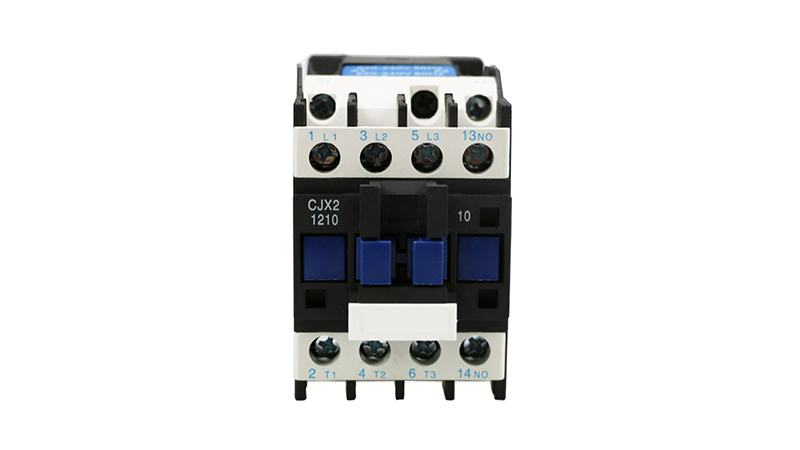An AC contactor is an electrical switching device used to control motors, heating equipment or other electrical loads. Its main function is to remotely connect and disconnect circuits through electromagnetic drive. It is widely used in industrial automation, building electrical systems and mechanical equipment.
Remote control: Use low current signals (such as PLC or buttons) to switch high power loads.
Frequent operation: Compared with mechanical switches, contactors are more suitable for high-frequency switching.
Safety protection: Used in conjunction with thermal relays or electronic protectors, it can provide overload and phase loss protection for motors.

The CJX2 series is a widely used AC contactor in China, suitable for general motor control, lighting systems and heating equipment. Main features:
Modular design: Compatible with auxiliary contacts and mechanical interlocking devices.
Long mechanical life: Typically more than 1 million operations, suitable for medium frequency use.
Cost-effective: Suitable for standard industrial environments.
Applications: Fans, pumps, conveyors and other loads that are not frequently started/stopped.
For applications that require frequent switching (e.g., inching control, cranes, machine tools), standard contactors may experience contact wear. High-frequency starting contactors should be used, which have the following features:
Silver alloy contacts: Resistant to arcing and welding.
Enhanced arc suppression: Reduces contact damage
.
Higher mechanical durability: More than 3 million operations.
In automation systems controlled by PLC, inverter or servo, contactors must have fast response, low noise and anti-interference capabilities. Key requirements:
Low power coil: Reduce PLC load.
High sensitivity: Ensure fast action.
EMC design: Prevent false triggering.
Selecting a suitable AC contactor depends on the following parameters:
| Parameter | Selection criteria |
| Rated current | Select according to the load current (usually 1.2-1.5 times the rated current of the motor). |
| Switching frequency | ≤30 times/hour use standard models; >600 times/hour use **high-frequency contactors |
| Rated voltage | Coil voltage (AC 220V/380V) must match the control power supply |
| Number of poles | 3 poles (motor), 4 poles (three-phase four-wire system). |
| Auxiliary contacts | If signal feedback is required, please select a model with normally open/normally closed contacts. |
| Protection level | For dusty or humid environments, please select a model with IP65 or higher protection level. |
For motors that start/stop frequently (e.g., cranes, presses, automated machinery), consider:
1. High-frequency contactors (e.g., CJX2-F or LC1-D).
2. Solid-state relays (SSRs): no contacts, ideal for ultra-high frequency use (but more expensive).
3. Soft starters or inverters: reduce starting shock and extend contactor life.
AC contactors are often used in conjunction with the following protection devices:
Thermal relays (e.g., JRS1): provide overload protection, but have a slow response.
Motor protection circuit breakers (e.g., GV2): integrate short-circuit and overload protection.
Intelligent protectors (e.g., EOCR): support phase loss, stall, and current imbalance protection.
AC contactors are essential in automation control, and selection depends on load type, switching frequency, and environmental conditions. For general use, the CJX2 series offers cost efficiency, while high-frequency start contactors are ideal for frequent switching. Combining them with soft starters or smart protection enhances system reliability and longevity.
Proper selection improves equipment stability and reduces maintenance costs, making it a critical aspect of electrical design.